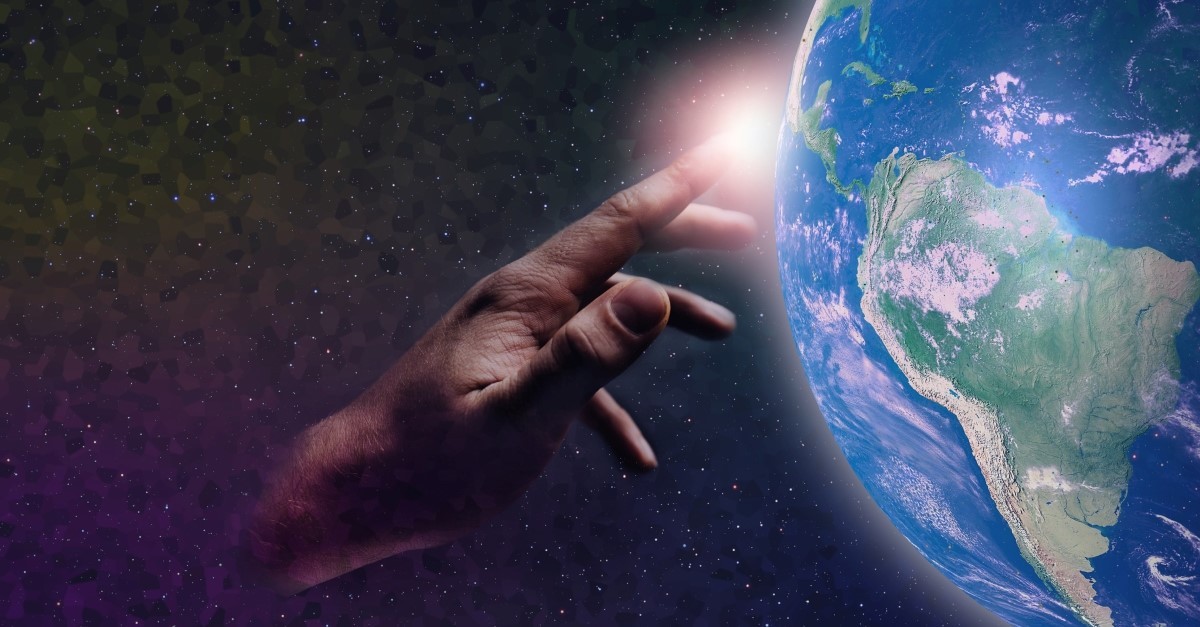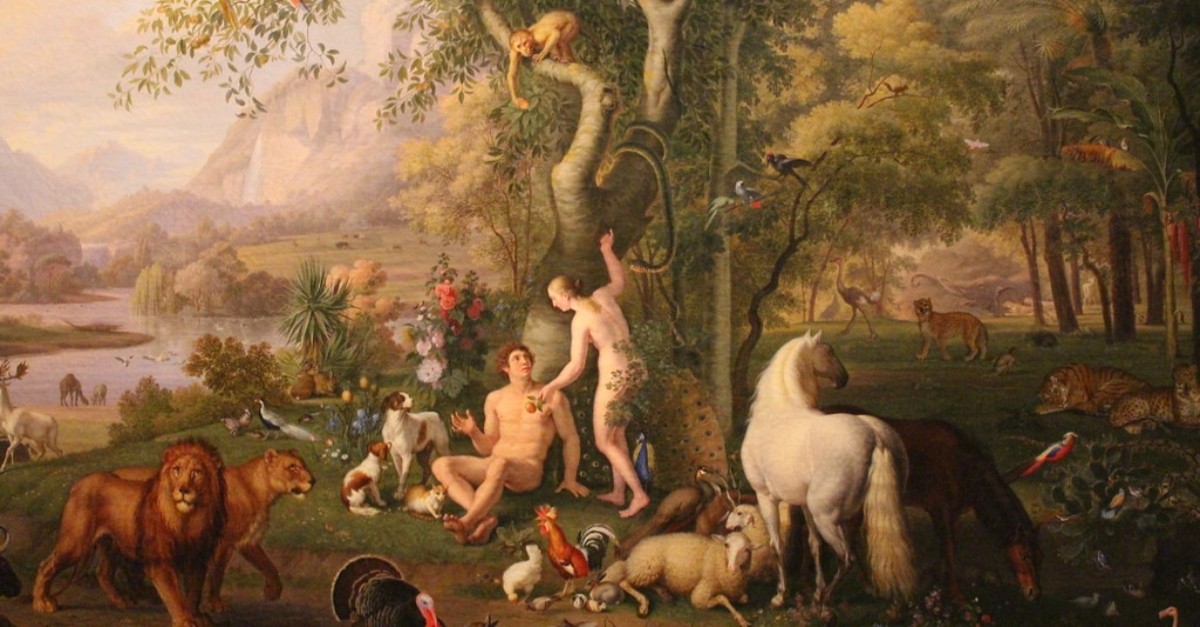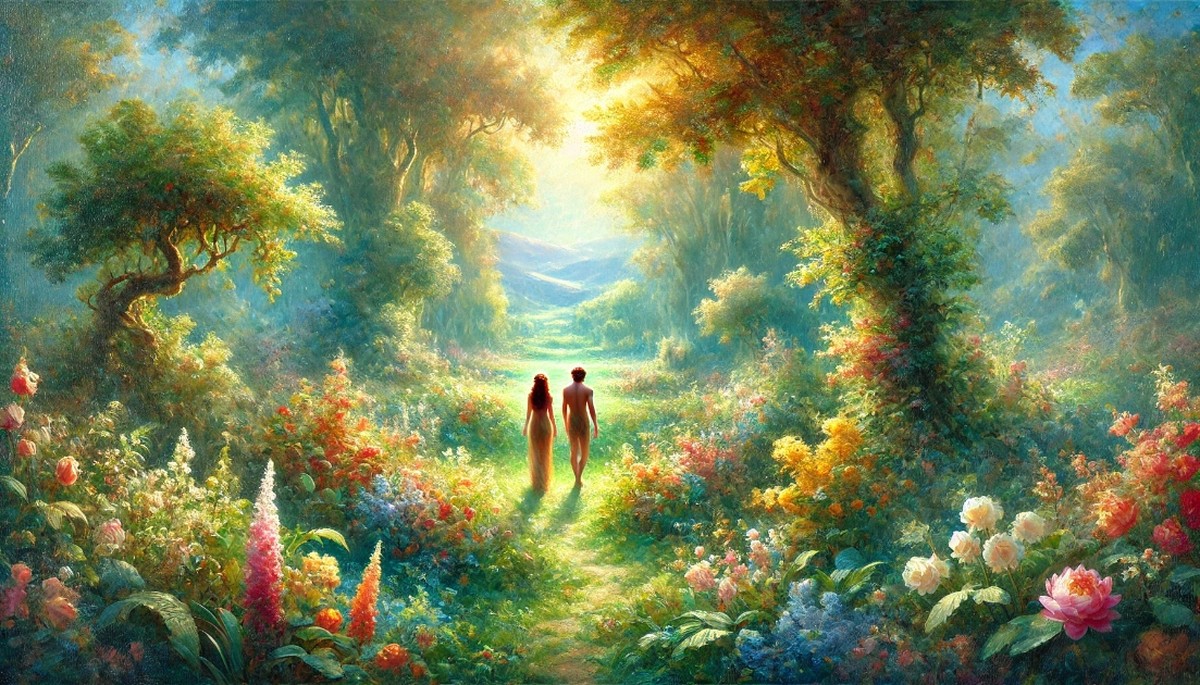
The biblical canon starts out like a story. While old fairy tales might say, “Once upon a time,” Scripture says, “In the beginning, God created the heavens and the earth.” The first verse gives us the main character, God, and his role as Creator and what he does. He creates all we see, hear, and experience. The Bible often packs eternal truth within a few words, and the first verse serves as a great example.
The Bible introduces God as the main character, and God is immediately active. He creates. And yet part of his creation, the earth, seems incomplete. We next read about how the earth seems empty and in need of something more.
And when we discover what that is, we understand why and how God engages with a “world without form and void.” And our purpose within it.
Photo Credit: ©iStock/Getty Images Plus/Tzido

Where Can We Find the Phrase “World without Form and Void”?
Genesis 1:2 states, “And the earth was without form, and void; and darkness was upon the face of the deep.” The Hebrew phrase “without form and void” is tohu wabohu. Looking at the meaning of these swords helps us further comprehend the state of the earth at creation.
The Hebrew word for earth is eres, which means land, ground, or the physical earth. It doesn’t refer to the whole universe, or all of creation, but the land God was in the midst of shaping. Unlike the modern English idea of “world,” which generally points to the entire globe or even all humanity, eres focuses on the physical space and material of the earth.
In this verse, tohu means formlessness, emptiness, or confusion. The Bible uses the word again in places like Isaiah 45:18, in which God declares he didn’t create the earth to be tohu but to be inhabited. Therefore, this word describes the earth as unfinished. Not filled. Tohu can also mean waste, desolation, or chaos in other biblical contexts (Deuteronomy 32:10, Job 26:7). This isn’t an evil but a lack of order, one in need of God’s creative work.
The text connects the word bohu to tohu. A much rarer word, bohu reinforces the idea of emptiness, or void. Bohu focuses on the lack of inhabitants. Nothing was yet present in the world that was made for habitation. Even science marvels at the exact placement of the earth in relation to the sun and the rest of the universe, precisely in the right position to have life and observe the rest of creation. Bohu says nothing was present in the earth—no life or purpose. Yet God was about to create just that.
To put these ideas together, the earth wasn’t in an evil state, but it was in need of more creative work and order, and it was waiting to be filled with life.
Photo Credit: © Getty Images/Oleksandr Bushko

How Does God Fill the “World Without Form and Void”?
God fills the world without form and void by speaking creation into existence. His Spirit hovered over the chaotic waters, an active presence, and he uses his Word to create.
Genesis 1 consistently states, “And God said …” followed by a creative act. In other religions, the gods struggle to create. But God simply speaks, and his Word accomplishes his commands (Isaiah 55:11). And his first Word was light into the darkness.
In verse 3, God says, “Let there be light,” and light existed. Light doesn’t come from the sun yet (not until day four) but from God himself, who is light (1 John 1:5). The earth was covered in darkness, which has no substance (empty, void). Darkness is literally the absence of light. So God sees the emptiness and brings substance into it, his light.
Jesus exists here at creation. The Gospel of John records Jesus as the Word (John 1:1) and the Light of the World (John 8:12). God creates through Jesus.
At this point in Genesis, God begins creating and separating through his Word—light from darkness, day from night.
The formless earth finds form in day two and three of Creation as God separates the waters and the sky and the land from the seas. Now there’s a place for things to live and multiply. So over the next three days (days four through six), he fills the formed earth with life—sun and moon, fish in the seas, birds in the heavens, animals on the land.
Finally, he saved the best for last: He created humanity. But he didn’t speak humans into existence. He fashioned them with his hands, a special work, and he imparted his own image. Why? Because as much as he filled the earth with birds, fish, and animals, the earth wasn’t finished yet.
God created humanity with a specific purpose. Being made in his image, he fashioned them to rule and steward creation as his earthly representatives.
Photo credit: Wikipedia

What Does This Teach Us about God’s Character?
We see the Trinity at creation. God used the Word (his Son) to create. And his Spirit actively moved upon the face of the chaotic waters. Before God spoke, his Spirit existed and prepared for his work. God doesn’t ignore chaos, and disorder. Instead, he enters into it, preparing to bring transformation. God isn’t distant from us or the world, as broken as it is. He comes near through his Spirit. We need his Spirit for any good work. Just as the resulting creation was all “good” or “very good,” the Spirit makes the way for every wonderful thing. Throughout history, God doesn’t leave us to ourselves; he enters the story through Christ and the Spirit to redeem and restore.
God’s Word will always have an impact. It will change and transform. It doesn’t depend upon our ability or power. Every part of creation and history follows this pattern. When God speaks, creative order enters chaos, and light enters darkness. God is a God of order, not confusion (1 Corinthians 14:33). He doesn’t move or work randomly. He has his times and purposes. He will accomplish his will through his Word.
While it all depends upon his power, humanity has a place in the purpose. We were made with a design to help him bring his Word and image to the earth.
Photo credit: ©GettyImages/Arthit_Longwilai

What Does This Teach Us about Adam and Eve’s Purpose?
God does nothing by accident. He acts with intention and plan. He made humanity in his image with a purpose. What does it mean to be made in his image?
God entered the emptiness and chaos of the world to fill it and bring creative order to the earth. Being made in his image means we have the same motivation, to engage darkness with light. God didn’t create Adam and Eve to simply take care of the Garden. They were meant to partner with his work of spreading his order and glory throughout the earth. He designed Adam and Eve to take the model of the Garden and extend it outward through multiplying his image.
Genesis 1:28 states: “Be fruitful and multiply, and fill the earth and subdue it.” Yes, he commanded them to have children. God led the first humans to bring his rule and reign over the entire world. He called Adam and Eve to expand his beauty and order, to transform the whole world into the Garden of Eden, in a sense, just as he brought order and filled the world without form and void.
Eden wasn’t the end of the story but the beginning. Adam and Eve learned to walk with God in the Garden (Genesis 3:8), the core discipline they would need to be sent forward to bring his presence and image to the world. Adam and Eve were set within the Garden to tend it, yet through tending it and naming creation, they learned God’s design and what they would need to reproduce.
God gave humanity family as the redemptive model. Man, woman, children, multiplying through loving and intimate relationship. Adam and Eve’s children were to spread across the world and bring God’s presence and governance wherever they went. Since humanity was immortal (death came through the Fall), they didn’t need family for the race to survive or to keep from dying out. On the contrary, family had a sacred purpose. To expand God’s kingdom. And it still does.

What Can We Learn from Genesis’ Phrase “World Without Form and Void”?
Humanity lost its purpose at the Fall. Sin disrupted the mission. When Adam and Eve chose to rest in their own righteousness (eating of the Tree of the Knowledge of Good and Evil), they rejected the Tree of Life. Rejecting life led to death. Their disobedience broke fellowship with God, and because of the corrupted nature, humanity lost the ability to properly partner with God in his purpose to fill the earth with his image and glory. Instead of spreading God’s order, sin spread destruction and violence.
Throughout history, people have tried to build their own kingdoms apart from God. But without his presence, these kingdoms only spread more chaos and death. Instead of ruling with God, people turn to selfish designs, leading to the oppression of others.
However, God didn’t give up on his plan. He will still fill the earth with his glory, and he will use people to do it. And it will be his work from beginning to end. Therefore, he sent Jesus, his Son and the perfect image of God (Colossians 1:15). Christ came to restore what was lost, to undo the works of the Devil. Through Jesus’ death and resurrection, he defeated sin and gave us a new opportunity to fulfill the original call. We see this call in what we call the Great Commission (Matthew 28:18-20). “Go therefore and make disciples of all nations, baptizing them in the name of the Son and the Holy Spirit, teaching them to observe all that I have commanded you.” This returns people to the original Genesis mandate. Although the new covenant makes it even greater. Instead of physically filling the earth, God calls Christians to spread the heavenly kingdom by making disciples.
Jesus taught that the Gospel of the Kingdom would spread through the whole earth before the end would come, fulfilling God’s purpose (Matthew 24:14). And like Adam and Eve needed both each other and to walk with God, Christ gave us the Holy Spirit to live within us, promising “I am with you always” (Matthew 28:20). The Holy Spirit empowers believers to preach and minister the Kingdom through the world (Acts 1:8). Further, believers are now the new family of God, the Body of Christ. Family remains the model through the spiritual, eternal church. Through the Spirit in the Church, we walk with Christ to fulfill this purpose, not by human strength but God’s power (Zechariah 4:6).
Often, we can look at the broken world around us, filled with darkness, and we can become discouraged by the violence and oppression. However, just as God entered the empty chaos of the earth with his Word and Light to bring order and life, through Christ he invites us to spread his Word and Light in relationship with him, the Good News of the Kingdom leading to the transformation of all creation to the new heaven and earth where we dwell with him forever. On that day, the world will be filled with the glory of the Lord through a redeemed humanity, accomplishing God’s will.
Peace.
Photo Credit: ©iStock/Getty Images Plus/artisteer

Originally published Thursday, 06 February 2025.
